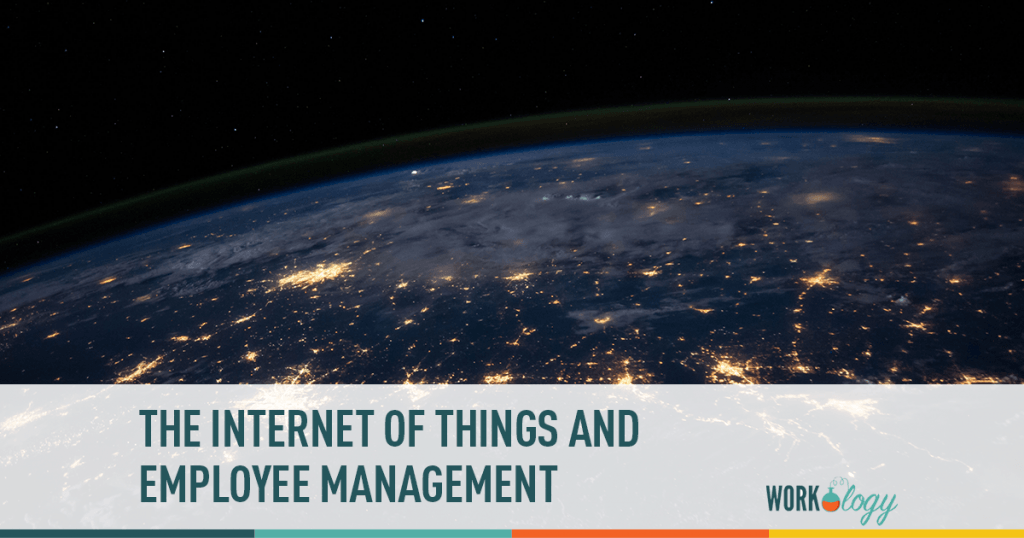A term we hear more and more about every day is the “Internet of Things.” We here that our homes and offices will be controlled by the IoT, with our refrigerators contacting you and letting you know you are low on milk; your car, which will be driverless will communicate with other cars and road infrastructure; your abode will communicate via smart meters to know when and how resources are being used; and your clothes and body will communicate with each other and other devices to keep you healthy and safe. We will also run our companies and manage our employees through the IoT as well.
Possible employee management
How might companies use the Internet of Things to more effectively manage its “human resources”? Futurist author Jacob Morgan gives us a hint in his article A simple explanation of the ‘Internet of Things’. He says:
“Say for example you are on your way to a meeting, your car could have access to your calendar and already know the best route to take, if the traffic is heavy your car might send a text to the other party notifying them that you will be late. What if your alarm clock wakes up you at 6 am and then notifies your coffee maker to start brewing coffee for you? What if your office equipment knew when it was running low on supplies and automatically re-ordered more? What if the wearable device you used in the workplace could tell you when and where you were most active and productive and shared that information with other devices that you used while working?”
An office could anticipate an employee’s need and have equipment and supplies at the ready. Or as I wrote in Future Friday: Monitoring employee well-being by testing their sweat each employee could be wearing a device that would monitor them for safety or health and warn someone when an employee is tired or in distress. If they are a truck driver (assuming we will not yet have driverless trucks) and the device notices they are flagging or nodding off they truck and device could require the driver to pull off and rest and refresh themselves while notifying the company and customers of a possible change in delivery time.
Not just devices
As you can see it will not just be devices that will be controlled by the IoT. Human beings could also be controlled by the IoT, for better and for worse, depending on your point of view. There is potential for increasing productivity and safety. There is also the potential for increasing abuse and a lack of privacy. We as a society are going to have to decide the best case scenario that we are willing to accept as a compromise between being better off and exercising our free-will. Cases can be made for both. Would you like to be a better employee and be your most productive by being connected or not? You will most likely have to decide in the next 10 years.
Who knows we may be making for a new division of society, “the connected” versus the “unconnected”.
If you want to know about the Internet of Things, read Morgan’s article, and here and here as well.









